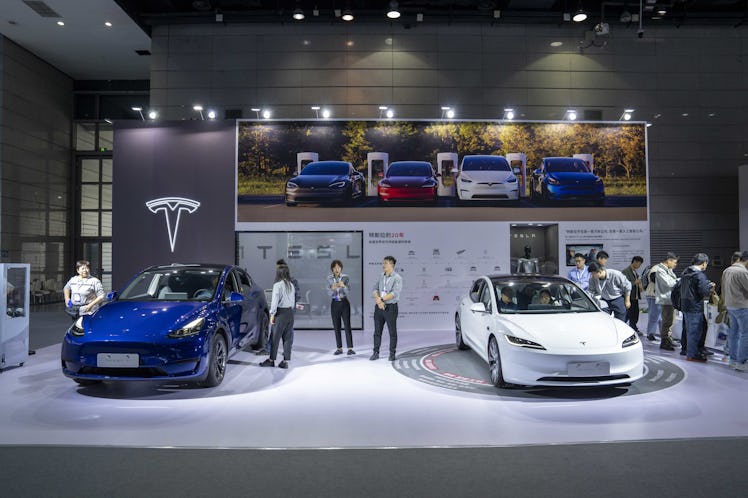Teslas Are No Longer Priced Like Luxury Vehicles
The family of EVs have suddenly become more of an option for the average buyer.

Major price cuts to Tesla models have led to certain models of the ultra-popular electric vehicles (EVs) functionally not being priced like a luxury vehicle. In addition, months of successive price cuts — including cuts in the spring of 2023, cuts in September to the Model X SUV and Model S sedan, and now October price drops for Tesla’s Model 3 sedan and Model Y — have ensured that all four Tesla models are now cheaper than they were at the start of the year.
Most significantly for buyers, the sticker price of the Model 3 has been reduced by $1,250, giving it a base price of $38,990. The Model Y’s cost is down $2,000 to a base price of $43,990. These price cuts make these two models cheaper than the average cost of a new vehicle in the U.S., which sits at around $48,000, per a recent report by Bloomberg Green. (Yeah, cars are too expensive.)
Additionally, the Model X started 2023 at $120,990; now it retails at $79,990, as of September. The model S has also dropped nearly $30,000 in price, retailing at $74,990.
Besides making the Tesla Model Y and 3 way more affordable for the average buyer, these prices have affected the EV market in several major ways, Cox Automotive reports. Tesla price cuts have led to the average retail price of a luxury vehicle going down in 2023.
“Compared to September 2022, Tesla transaction prices are down 24.7%; Tesla Model 3 prices are down more than 26% year over year to $41,484, well below the average luxury car price,” according to Cox Automotive. “Tesla’s average transaction prices are now lower than Acura, Lexus, Infiniti and Volvo.” (The average price of a luxury vehicle was down 6.2% year over year, to just about $62,000.)
In addition, the reduced sticker price for Tesla’s popular models has skewed the average cost of an EV in general, taking the average from $65,000 a year ago to $50,683 today.
But why the aggressive price cuts? Bloomberg reports that Tesla is attempting to meet a lofty goal: selling 1.8 million units in 2023 — a year when rises in both interest rates and inflation tightened Americans’ pocketbooks.
The overall market might be a tough situation for auto-makers. But it’s not exactly bad for consumers, especially amid high-interest rates. Plus, there’s more good news on the horizon for those in the market for an EV: Beginning in January, the federal tax credit of $7,500 for first-time EV buyers will be available immediately at the point of purchase instead of needing to wait for the benefit to be unlocked at tax time. This new change will allow dealers to offer this financial benefit in cash or as a down payment on the vehicle.
The existing requirements to qualify for the EV tax credit will still apply, including battery and mineral component requirements, an income cap, and vehicle price limits. Most Tesla models now qualify for the EV tax credit.
Some states offer added incentives, making EVs more affordable for middle-income drivers. For example, the Colorado Energy Office's program provides rebates to qualifying buyers of up to $6,000 for eligible participants who exchange an old or high-emitting gas car for an EV.
For full details on which vehicles quality or don’t qualify for the EV tax credit, visit fueleconomy.gov.